Planting hosts and caring for her
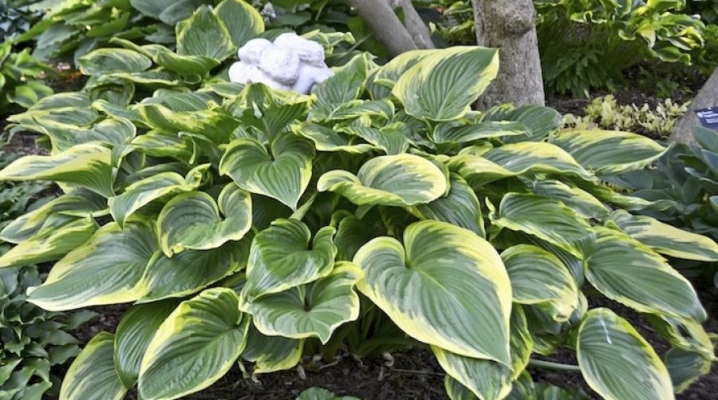
Hosta is a perennial plant belonging to the Asparagus family. Hosta is considered the homeland of Japan, where it has been grown for several thousand years and is revered as a sacred plant. For many centuries, it was he who had the honor of being the decoration of the statue of Buddha, and today it is actively used in landscaping parks and gardens and attracts the attention of gardeners and landscape designers with its beauty.
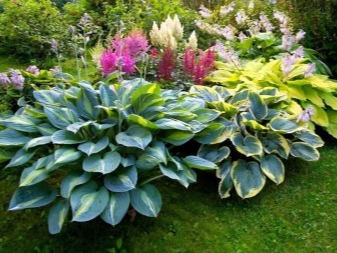
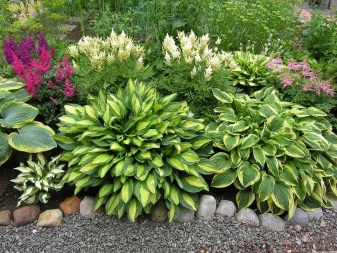
We take into account the climate: optimal timing
The optimal time for planting a plant in open ground is early spring and late summer - early autumn. Hosta, planted during these periods, takes root well and tolerates winter well. However, there are no clear dates for planting a plant, and each gardener must independently determine their dependence on the climatic conditions of the area. So, in central Russia and in the Urals, plants begin to be planted in mid-May, when the threat of return frosts has completely passed.
In Siberia and the North-West, the procedure is postponed for 1-2 weeks and they start planting only after a stable above-zero temperature is established at night.
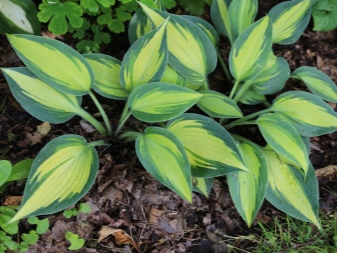
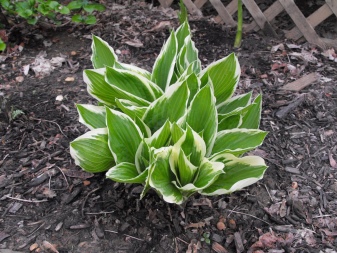
As for the autumn planting, in middle latitudes it is allowed to be carried out in the first decade of September, while in regions with a more severe climate - no later than the second half of August. The same applies to Siberia - immediately after the heat subsides, the plants begin to prepare for planting. The sooner the hosta is planted in open ground, the more nutrients it can store and the better it will endure the winter. However, many experts advise against planting in autumn in areas with harsh winters and recommend planting the host only in the spring and summer.
In most cases, hosts start selling seedlings at the end of winter - early spring. It is recommended to store young plants before planting them in the basement, pantry or on an insulated balcony at a temperature of 5 to 10 degrees. If the sprouts are too large, then they are planted in pots and kept in them until they are transplanted into the open ground. If the plants are still small, they are left in the peat where they were sold and are not disturbed before planting. An adult plant is transplanted in the spring, until it has new leaves. However, if necessary, it can be transplanted in the summer, moving the hosta to a new place with a large lump of soil.
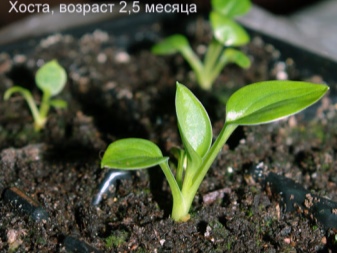
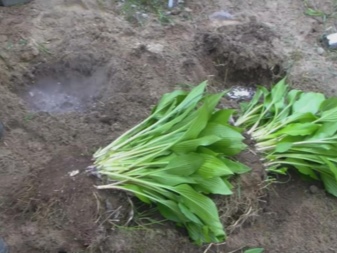
Site selection and soil preparation
The choice of a site for planting hosts is a very important point and directly affects the safety of varietal properties. This is due to the fact that some varieties grow exclusively in shaded areas, while others require bright sunlight. Below are the most favorable landing sites for different types of hosts.
- In the shade, varieties with dark green leaves, as well as blue foliage, should be planted. If shade-loving blue varieties are planted in the sun, they will quickly lose the waxy coating of the leaves and change their color to green.
- Hosts with emerald-colored leaves can be planted both in partial shade and in the sun. Plants will differ among themselves in the intensity of the shade, however, the main color will not change from this.
- Saplings with yellow leaves will perfectly take root in a slightly shaded sunny flower bed, and they will be accompanied by varieties with wrinkled leaf blades. True, the latter, under the influence of ultraviolet light, slightly brighten, however, in general, the color remains the same juicy and beautiful. The ideal option would be to plant these varieties under a young apple tree or other deciduous trees that cast a light shade.
- Hosta with green leaves and a white border around the edges is planted depending on the density of the leaf plates. So, plants with dense foliage can be planted in the sun, while thin-leaved varieties are best defined in the shade.
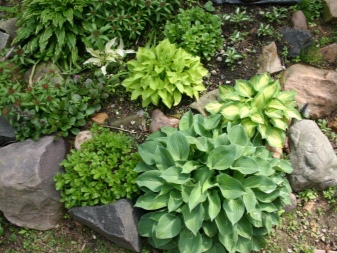
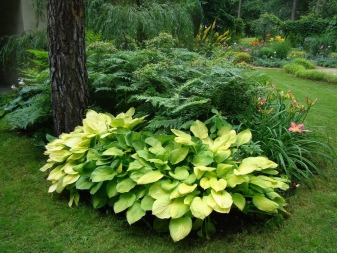
Plants planted in the sun need special control.
So, if darkening of the tips or edges is observed on the foliage, matting of the colors or faded spots - the place is chosen incorrectly, and the flower suffers from an excess of ultraviolet radiation. In such cases, you need to immediately transplant the plant into the shade or partial shade, since a strong root system allows you to do this at any time.
In addition to the location, the composition of the soil also plays an important role. The plant prefers light loamy soils and flat relief without stagnant rain and melt water. The ideal option would be fertile, slightly acidic (pH 6), permeable soils, which will provide free access of air and moisture to the roots of the plant. If there is problematic heavy soil on the site, then a self-prepared nutrient soil mixture will be the best option. For this, garden soil, de-acidified peat and crushed compost bark are mixed in equal parts. Expanded clay, used as drainage and necessary to improve air access to the root system, will be a good addition to the mixture.
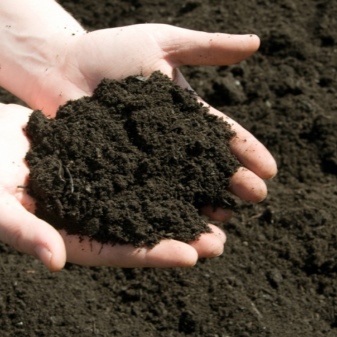

How to plant in open ground?
Hosta seedlings tolerate planting in open ground and quickly take root in a new place. The main thing is to choose the right seed and follow some planting rules. A young sprout should have 2-3 promising buds and a healthy rhizome with elastic living roots 10-12 cm long. It is advisable to plant in dry cloudy weather, having moistened the soil in advance.
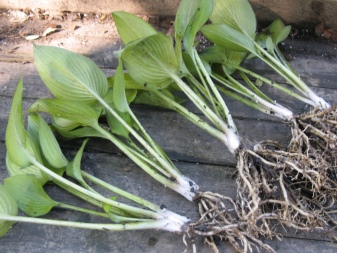
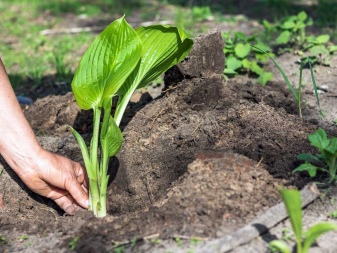
The size of the pits is determined depending on the volume of the root system and averages 30x30 cm.The bottom of the pits is drained using expanded clay, broken brick or river pebbles. On top of the drainage, compost, peat or humus are placed in a heap and 50 g of complex fertilizers are added. The plant is placed on a mound, the roots are carefully straightened and sprinkled with prepared soil mixture or native fertile soil.
They try not to burrow the root collar into the ground by more than 1.5-2 cm, otherwise the plant may rot. The soil is easily compacted and watered with water at room temperature. The root zone must be mulched with crushed bark or peat.
It is recommended to plant the plants at a distance of at least 50 cm from each other.
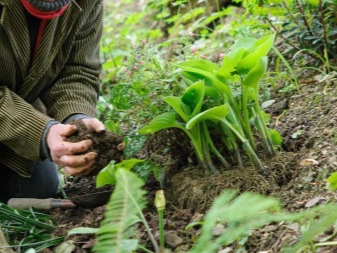

Can I grow in an apartment?
Disputes about whether the hosta is suitable for growing at home often arise among gardeners. Some believe that the plant is intended only for outdoor cultivation in the garden or in the summer cottage, and it makes no sense to keep it as an indoor flower. Others, on the other hand, consider the hosta to be a spectacular decoration for the winter garden and successfully grow in pots.
but growing a plant in an apartment has its own specifics and requires a careful selection of varieties... To do this, select not too large varieties that will not experience discomfort while in the pot. If the seed method is used for breeding, then the freshly harvested seeds are slightly dried and stored in the refrigerator for a month. 30 minutes before planting, they are placed in any growth stimulant, for example, in "Kornevin" or "Epin".
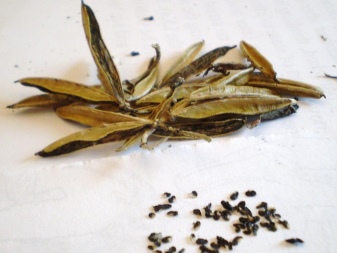
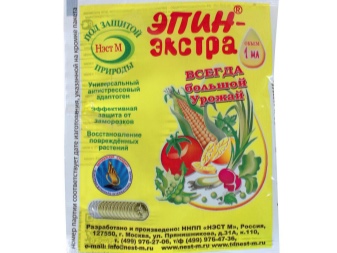
However, with this method of reproduction, it should be remembered that it does not guarantee new plants to preserve all the varietal qualities of the parent individuals.As a substrate for planting seeds, a ready-made mixture is used, which has undergone antibacterial treatment and does not contain spores of fungus and pathogens. Choose a plastic pot with small holes in the bottom. It must be treated with alcohol or potassium permanganate, drainage is laid and nutritious soil is poured.
Then take a small portion of the formula and pour it into a plastic container. Seeds are scattered on top and sprinkled with a centimeter layer of earth. Then the soil is lightly tamped and watered, trying not to wash the seed material onto the surface. Seeds are usually poured in more, since the germination rate of the hosta is poor, and many of them will not sprout. Next, the container is covered with a bag to prevent moisture evaporation and removed to a shaded place with a temperature of 18-25 degrees. Periodically, the planting is opened and sprayed with warm water.
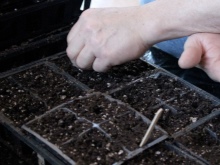
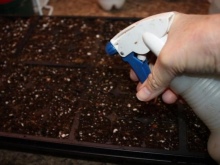
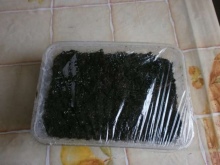
After 2-3 weeks after the appearance of the first shoots, the film is removed, and the container is rearranged to a bright place. Then waiting for the appearance of 2 young leaves, after which the seedlings are transplanted into separate pots... Watering young plants is carried out by placing the pots in a pan with water, in which they are kept until the soil in the pots is moistened.
For growing up, hosts choose a moderately shaded place, however, periodically expose it to a sunny window.
For the winter, many flower growers recommend removing the plant in a basement with a temperature of 2 degrees. The meaning of this manipulation is to create conditions for the plant close to outdoor conditions, which makes the flower go through all the natural phases of life, as if it were growing in open ground. To preserve the shape of the room hosts, experts recommend tearing off the peduncles, and separating cuttings from overgrown specimens and replanting them in separate pots. Thus, observing the simple rules of agricultural technology, you can grow a host not only in the country or in the garden, but also on the home windowsill.
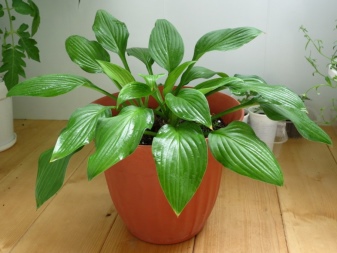
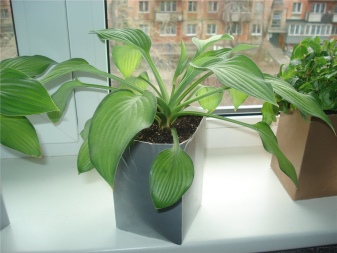
How to take care of it properly?
Hosta is a rather unpretentious plant and does not require special conditions. In order for the flower to grow normally and develop correctly, it should be watered, loosened, fertilized, pruned and mulched.
Watering
In the first days after planting in open ground, the plant is watered according to the following scheme: every 3-4 days in dry weather and, if necessary, in the rainy season. Moistening is continued until the seedling takes root and a new leaf appears on it. Next, the plant is transferred to a general watering regime and do it as needed strictly in the morning. Evening watering is not advisable, as it attracts nocturnal slugs.
In dry weather, plants should be watered daily, directing the stream strictly to the root. This is due to the fact that when watering the foliage, spots appear on the leaf plates that look like burns. This is especially true for varieties with a wax coating, which is simply washed off under the influence of water. The best solution would be drip irrigation, which prevents the development of fungal diseases and the appearance of burns on the leaves.
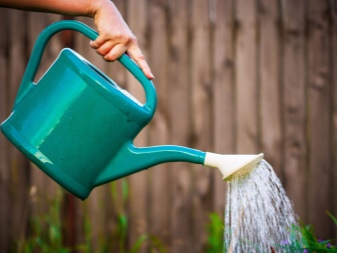

Loosening
From time to time, the soil around the hosta should be loosened, especially if mulching has not been carried out. It is advisable to do this immediately after watering, while removing weeds.
Top dressing
It is recommended to fertilize the host 3 times a year. The first feeding is performed in the spring before the leaves appear, using nitrogen-containing compounds for this. They contribute to the rapid growth of the green mass and give the leaves elasticity. Chicken droppings can be used as fertilizer, carefully scattering it around the bush in a thin layer. The second top dressing occurs in July, during the flowering period of the plant, and is performed with potassium-phosphorus preparations. Immediately after flowering, a third top dressing is applied, using organic fertilizers for this, as an option - mullein solution.
At the end of August, feeding is stopped and the plant is allowed to calmly prepare for winter.
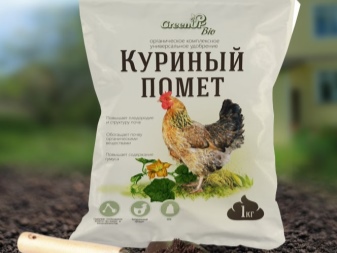
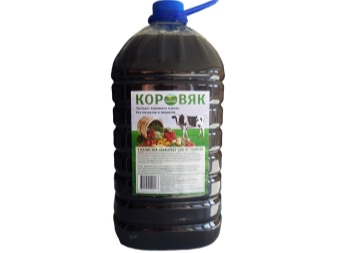
Pruning
Hostas are pruned only if they want to propagate the plant by dividing the bush. Mowing foliage activates dormant buds, which will produce a large number of sprouts and cuttings. As for the peduncles, if it is not planned to obtain seed material, then immediately after the corollas wilt, they are cut off, thereby preventing the consumption of plant juices for the formation of seeds. With sanitary pruning, diseased, burnt and damaged leaf plates are removed.
Mulching
Due to the large leaf area and, as a result, increased transpiration, hosts need mandatory mulching of the root zone. This procedure helps to retain moisture in the roots and prevents the topsoil from hardening. Chopped bark, coniferous cones and needles are used as a mulching material. However, mulching has a downside. The fact is that slugs and snails simply love to hide under a layer of mulch and calmly eat large and juicy hosta leaves. In this connection, it is recommended to shake up the litter from time to time and check for the presence of pests there.
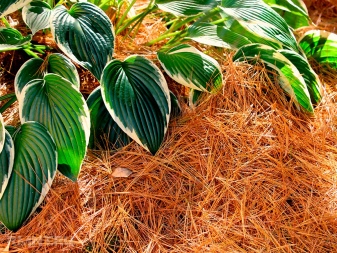

Preparing for winter
Khosta is a winter-hardy plant and tolerates the winters of central Russia well. The flower does not require any special measures and it winters well in the open field. A prerequisite for this is the deepening of the root system by at least 5 cm. Otherwise, the risk of root death from frost increases significantly. In the Urals and Siberia, the plant is covered with a thick layer of mulch, not forgetting to remove it at the onset of the first thaws. Otherwise, under the warm spring sun, the rhizome begins to rot and the process of decay may begin from high humidity.
Diseases and pests
Hosta is considered a healthy plant and has good immunity. However, she is still susceptible to some diseases. One of the most common hosta ailments is phyllostictosis. The disease manifests itself in the appearance of yellow-brown spots and is considered incurable. Affected plants must be burned, and the soil must be disinfected. Gray mold, fungal spot, and sclerotinia also occasionally affect the host, but are well treated by removing the infected leaves and treating them with fungicides.
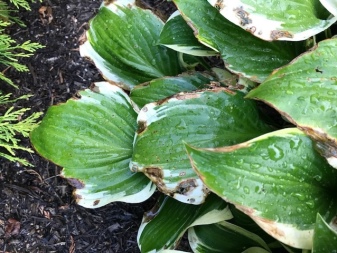
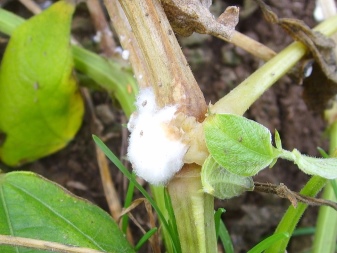
In addition to common diseases, there are also specific diseases that affect only the host.
These include the HVX virus, the spread of which occurs in the process of mixing the juices of infected specimens with the juice of healthy ones. This phenomenon is often observed when pruning plants or replanting them using the same knife. The source of the virus is often new, newly purchased plants, which are very healthy and well-groomed in appearance. The insidiousness of this virus consists in a very long incubation period, which can last for several years.
In this regard, thousands of plants around the globe are currently infected with the virus, since at the initial stage the disease is very difficult to recognize and stop. The main symptoms of the disease are blot-like spots and specks, and at a later stage, depressions in the leaf blade. The affected plants are dug up together with the root system and burned, and at this place it will not be possible to plant the hosta until all the surviving root processes have rotted. At the moment, no medications have been invented to prevent the spread of the virus.
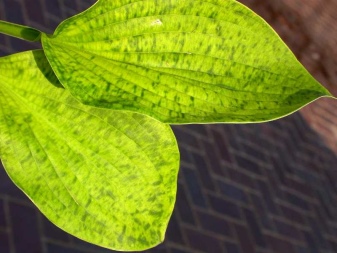

Of the natural enemies of the hosts, snails and slugs can be noted. Juicy leaves are a delicacy for them, therefore, in order to avoid the death of plants from the teeth of pests, it is recommended to install natural barriers in the form of mini-fences 20 cm high, made of galvanized sheet. Sharp gravel, eggshells, pine needles, barberry spines and broken glass are no less effective. Of the chemicals, quicklime, salt and superphosphate powder help. After contact with these substances, slugs secrete a huge amount of mucus, as a result of which they die from dehydration.
However, these funds are effective until the first rain, moreover, their frequent use can cause soil salinization. It is better to use slug and snail traps in the form of grapefruits, cucumbers, cabbage leaves and apples, as well as regularly mow the lawns and avoid storing plant residues on the site. If the listed methods do not help, then as a last resort, chemicals such as Nemaslug, Mesurol and Glanzit are allowed.
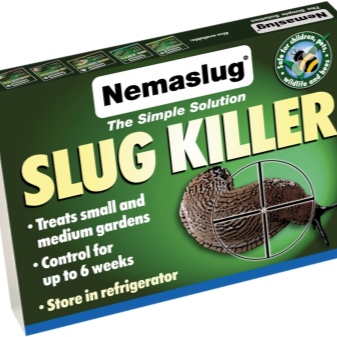
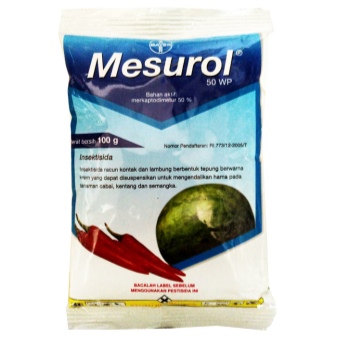
Compatibility with other plants
From a botanical point of view, the hosta is compatible with any garden plant. As for aesthetic compatibility or compatibility, the plant will look most advantageous with fern, heuchera, anemone and brunner. Equally advantageous is the combination with all types of conifers, as well as with geraniums, horned goats, lungwort, astilba, foxglove and primroses. The harmonious partnership is celebrated with the street tradescantia Sweet Kate, a plant with short golden stems and bright blue flowers. Peonies, dicenters and some varieties of garden grains such as miscanthus and reed grass will be good neighbors for the hosts.
The creation of a vertical accent in compositions with a host can be entrusted to daylilies, kupen, phlox and other flowers, which are just as unpretentious as the host itself. As for the neighborhood with roses, there is an opinion that it is not worth combining them, which is due to the too different requirements of plants for care and illumination. However, if you place them correctly, using the principle of tiering and taking into account the cardinal points, you can create an excellent ensemble. In such cases, the host is planted on the north side of the bush, due to which the rose will receive the amount of ultraviolet radiation it needs, and the host will be in some shade.
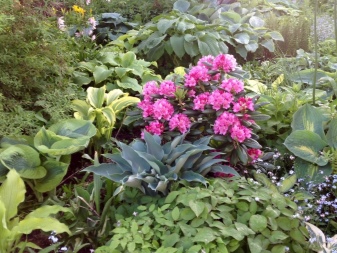
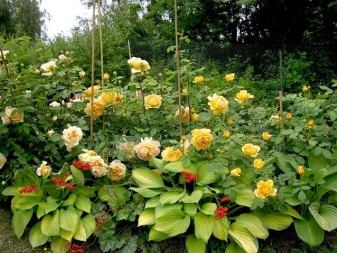
Use in landscape design
There are many options for using hosts in decorating a garden or park. Below are the most successful compositions and examples of landscaping with the participation of hosts.
- The plant can be beautifully positioned along garden paths and alleys and combined with the species already present in the landscape.
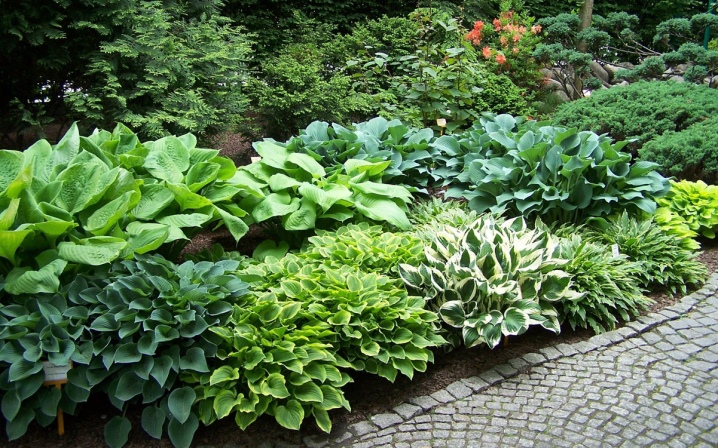
- Next to conifers, the hosta looks very dignified and favorably emphasizes the splendor of their crowns.
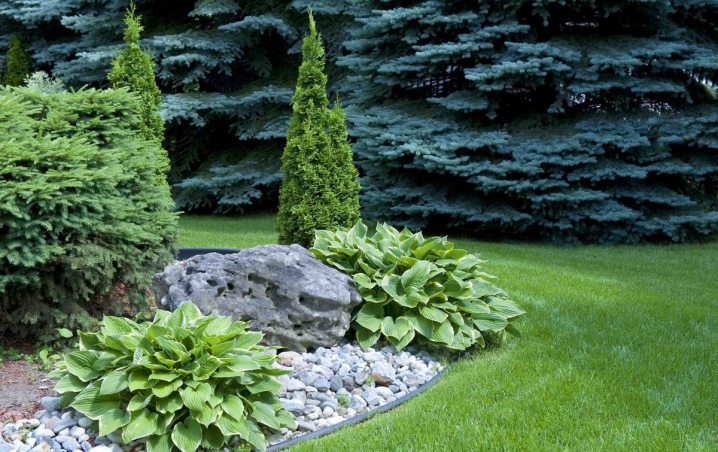
- Stylization of the landscape in the "wild" looks very natural.

- Compositions with different varieties of hosts look great on the banks of artificial reservoirs.
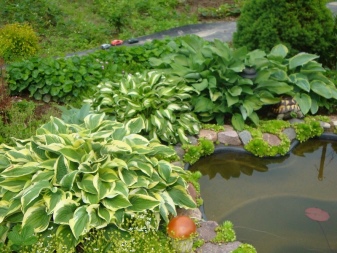
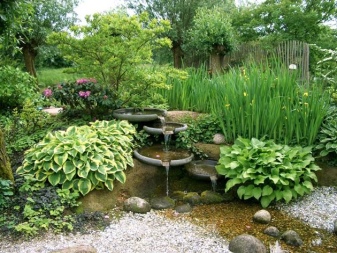
- Hosta in pots will be an excellent decoration for a cozy patio or gazebo.
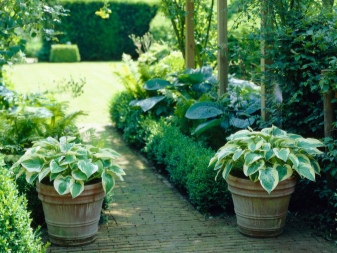
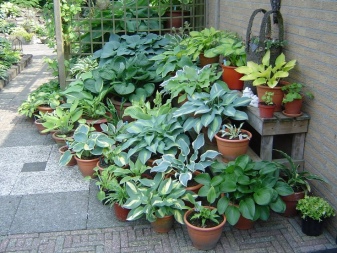
- Miniature varieties - as an ideal solution for decorating rockeries and rocky hills.
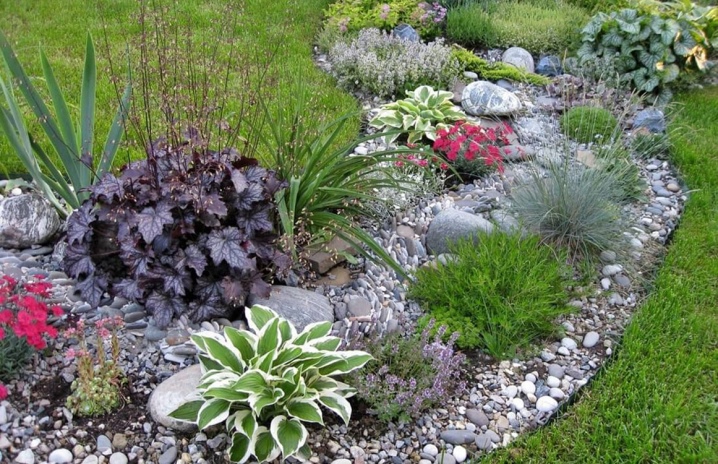
For information on how to grow a host, see the next video.







































































































The nicest article I have read. Everything about hosts is there. Thanks.
The comment was sent successfully.